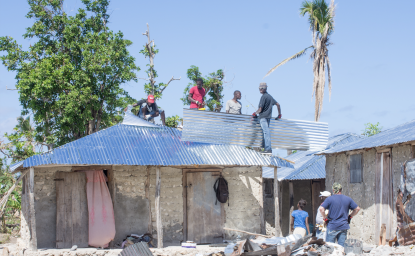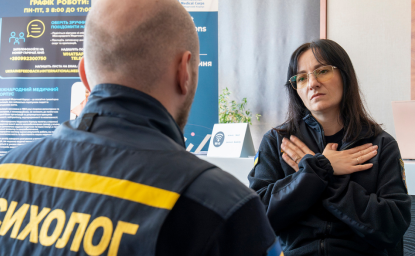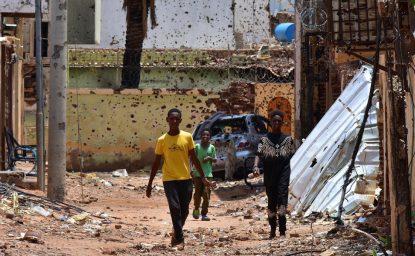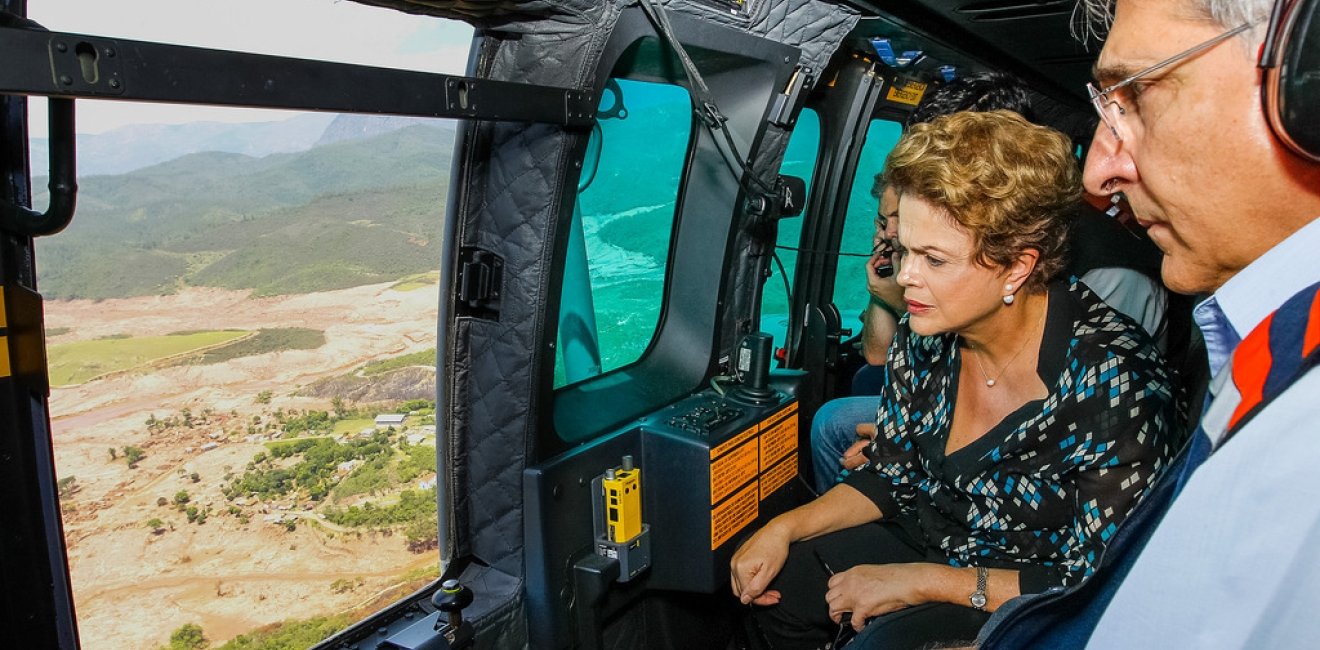On November 5, 2015, a tailing dam in the state of Minas Gerais (in the southeast of Brazil) ruptured. It released an estimated fifty million tons of iron ore waste into neighboring areas. It has quickly become the country’s worst environmental disaster. Seventeen people were killed and entire towns were submerged by the thick toxic sludge, which seeped into the Rio Doce river basin, traveled downstream, and has begun to spill into the Atlantic Ocean.[i] The environmental consequences are enormous for Brazil and will present the government with new challenges to introduce stricter mining regulation while establishing methods to mitigate future disasters and promote environmental sustainability. Parallel to updating Brazil’s archaic mining regulations, the country needs to address its culture of impunity, which has allowed for such accidents to happen repeatedly with little lessons learned, and which currently faces its largest test to its democracy with the impeachment proceedings for President Dilma Rousseff.
The tailing dams Fundão (which burst) and Santarém (which was damaged) are part of a complex iron ore facility operated by Samarco Mineração SA, a joint venture by mining giants Anglo-Australian BHP Billiton and Brazilian Vale. The output accounts for approximately 20 percent of the world’s export of iron ore pellets.[ii] Since the accident, the complex has been shuttered pending the investigation into the cause of the rupture, and is currently under a process of containment.[iii] Samarco analysts have already forecast a 10 percent drop in output due to inactivity at the mine, an effect already being felt by the mining industry for some years now due to the global drop in commodity goods and raw materials.[iv]
Historically, the mining industry has been economically generous to Brazil, accounting for about one fifth of its GDP, which over the last decade has been fueled by China’s appetite for commodities. Exports grew substantially from $8.3 million in 2003 to $43 million in 2011.[v] However, the decrease in global and national demand for natural resources due to the global economic slowdown and Brazil’s economic contraction has hurt the mining industry.[vi] Companies responded by enacting cost-cutting methods, but so too did government agencies’ ability to provide adequate oversight; with safety officer positions charged to liaison with each other were left vacant.
Mismanaged Oversight
The Brazilian government regulates mining through an outdated, understaffed, and underfunded agency, the National Department of Minerals Research (DNPM), which falls under the purview of the Ministry of Mines and Energy. Of the 663 registered dams in the country, the DNPM was tasked with inspecting only 15 percent, less than 99 dams, from 2013 to 2014.[vii] The Fundão dam itself had not been inspected since 2012. This was a direct result of a lack of capacity and guidance. The agency’s original mandate was to manage exploration rights and calculate royalties. After continued dam failures, in 2010 the Ministry of Mines and Energy tasked the DNPM to begin inspecting tailing dams with no added financial capacity or established regulations. Only four specialized DNPM inspectors were to provide oversight for an industry that had relied on self-regulation and self-reporting.
An Accident Waiting to Happen
Mining disasters are not new to Brazil. There have been five dam failures in the last decade, resulting in lost lives and damage to property and the surrounding environment.[viii] In 2013, a year after a different dam accident took the lives of two workers and two years before the Samarco dam burst, an independent study led by the Instituto Pristino noted discrepancies in the overall structural integrity of the tailing dams at the Fundão site. Yet the licenses were renewed and production continued.[ix] An engineer hired by Samarco to assist and oversee the dam’s design and construction has further corroborated these allegations. In September 2014, nearly a year before the dam burst, the engineer reported seeing a crack at the dam, and followed up with a report to Samarco with his findings and potential fixes.[x] Samarco has not clarified whether or not it had fixed the crack before the dam burst. The immediate cause of the burst is still being investigated.
As more information becomes unearthed, evidence is piling up that indicates the company’s culpability. The state attorney general’s office in Minas Gerais investigated the dam in 2007 and raised concerns relating to the structure’s stability. The report noted that even though questions were raised, the licenses to continue operating were granted.[xi] In three separate instances, no concrete action was taken in response to these disconcerting reports. This is indicative of an unsettling culture of neglect that has continued despite repeated accidents and an ineffective mining code.
Passing the New Mining Code
The current mining code needs to be updated to reflect a new reality. The current code, which was passed in 1967, deemphasizes regulation and places a premium on private companies seeking new concessions and the federal government collecting royalties. After running tenders for specific contracts, the DNPM would then award concessions to mining companies but paid little attention to the environmental impact or safety protocols. Profits trumped responsibility.
The proposed new code, which has been stuck in political limbo since 2013, must force a restructuring of the DNPM to allow for adequate funding and training of inspectors to ensure greater regulatory oversight. An analysis of the proposed code by a leading consultancy confirms this recommendation.[xii] The additional funding would come from a restructuring of the royalties afforded to the federal government, and a certain percentage would be funneled directly into oversight and training. Four inspectors is simply not enough. The code must strengthen the federal government’s ability to reject permits on the grounds of insufficient safety and environmental standards, thus replacing the piecemeal system of fines currently in place that does not hold companies sufficiently accountable.
The Brazilian government could follow the example of the Canadian government’s response to a similar tailing dam rupture in 2014 in British Columbia. New Canadian regulation after the accident imposed strict oversight, requiring that all dams be inspected on a yearly basis and be reviewed by an independent third party.[xiii] In the Brazilian context it is not enough to stop there, however. Brazil also needs to tackle the issue of inspectors’ authorization to impose penalties. While independent analysis can provide an overview of the structural integrity of dams, the ability to grant operating status must fall under the purview of the federal inspectors tasked with ensuring the safety of the structures. Recent history has proven that reports fall on deaf ears. Only a mandated cessation of output (after a failed inspection) will force companies to enact change.
The cost of increased oversight is more sustainable than the damage that dam ruptures cause in terms of reparations to families, international criminal litigation, and environmental cleanup. Incidents such as the Deep Water Horizon oil spill serve as a frightening reminder of the financial and environmental burden that remains in the wake of a disaster.
Breaking the Culture of Impunity
The systemic failure to promote safety in dam maintenance—both by the regulator and the company—is a consequence of the greater culture of impunity in Brazil. The country is currently facing its largest corruption scandal and an ongoing presidential impeachment process, which has continued to erode public trust in institutions while simultaneously invoking a new era of rule of law and accountability. The “Lava Jato” (Car Wash) investigation has specifically targeted the state-owned oil company Petrobras and has led to dozens of arrests of high level executives and politicians. Of the 594 federal deputies in Congress, 352 are currently facing some sort of criminal investigation.[xiv] The investigation has uncovered a cartel-like system between construction companies and Petrobras employees, which has funneled more than $3 billion in bribes and kickbacks.[xv] Placing high-level executives and politicians behind bars was once unimaginable in a country that had grown accustomed to turning a blind eye to backroom deals.
The culture of impunity and political mismanagement runs deep, and the mining industry is no exception. Companies such as Vale spend vast amounts of financial resources and lobbying efforts at the state government level to ensure their continued business. The same governor’s office that conducted the inspection of the Samarco dams received over $3.1 million reis (a little under US$1 million) in donations to the governor’s campaign, or about 6 percent of the total for lobbying efforts put aside for state governments.[xvi] The influx of cash to gain influence and collect political favors has muddled government oversight and companies’ commitments to long-term sustainable mining. Dam failures are a case in point. The United Nations Environmental Program and the International Commission of Large Dams released a report attempting to narrow down the causes of dam failures on a global scale. It noted that while reasons vary from the environmental conditions to structure, “The main causes of these reported cases of failure and incidents were found to be…lack of control of construction and a general lack of understanding of the features that control safe operations.”[xvii] A combination of lax oversight coupled with inadequate screening and maintenance of the Samarco dam resulted in its failure. The Fundão accident, like the ones before it, was preventable. This tragedy represents an opportunity to highlight the system’s deficiencies and to increase accountability to prevent future disasters of this kind.
A New Era of Accountability
The success of the ongoing criminal investigations into Samarco and the larger Lava Jato inquiry will help break the current status quo and usher in a new era of accountability. The reparations and indictments bestowed upon Samarco have been swift. The Brazilian government has sued the company for $4.8 billion, while also freezing all existing assets and revoking their permits.[xviii] Additionally, the Federal Police have indicted seven Samarco executives and engineers for their role in what the government is deeming an environmental crime. Investigators are calling for the indicted to be tried for homicide.[xix] Congress must now also follow suit and use the momentum to introduce and pass the new mining code. However, with so much uncertainty involving the current political situation and the presidential impeachment trial, any hopes of a new mining code will undoubtedly take a back seat.
The corruption investigations have reached the top echelons of the federal government, and on May 12, 2016 President Dilma Rousseff was overwhelming voted by the Senate (and the House days before) to step down from her office to begin impeachment proceedings. Accused of manipulating federal budgets to mask deficits in the lead-up to the 2014 elections, President Dilma Rousseff has denied any wrongdoing. In her place steps in her Vice President, Michel Temer, a constitutional lawyer from an opposing party who vows to bring prosperity back to Brazil by implementing fiscal austerity and rolling back signature programs led by President Dilma and her predecessor. Acting President Temer is also not without fault, as he is barred from running in the upcoming 2018 elections due to prior electoral violations. What becomes of this presidential shake-up under the stewardship of a new leader will have lasting ramifications for Brazil’s future. The priority, indicated by Mr. Temer upon assuming office, is the economy, but also legitimacy in the eyes of world markets and the international community.
This has become a watershed moment in Brazilian history and its continued democratic development. What could have just been another footnote in a long list of mining disasters with few lessons learned has become a catalyst for the strengthening of democratic institutions. In a country in which 75 percent of the population view climate change as the leading global threat, the federal government, through an empowered judicial system, must capitalize on this momentum by passing new legislation to ensure sustainable mining and strengthen Brazil’s democratic process.[xx]
--
Author


Brazil Institute
The Brazil Institute—the only country-specific policy institution focused on Brazil in Washington—aims to deepen understanding of Brazil’s complex landscape and strengthen relations between Brazilian and US institutions across all sectors. Read more

Explore More
Browse Insights & Analysis
In the Wake of a Tropical Cyclone: Turning to Violence or Building Peace?

Healing Ukraine's Invisible Scars

Volunteers Open Doors in Sudan Typically Closed to International Aid Groups

